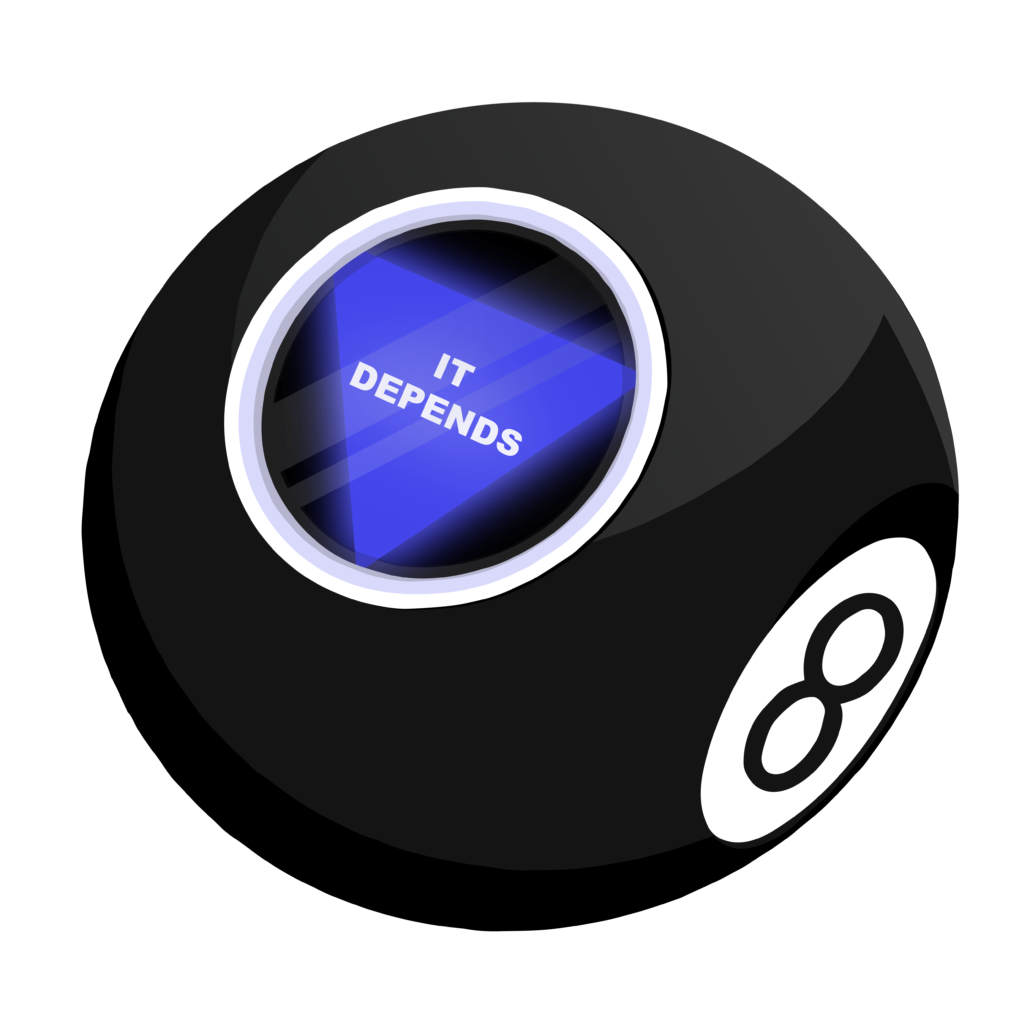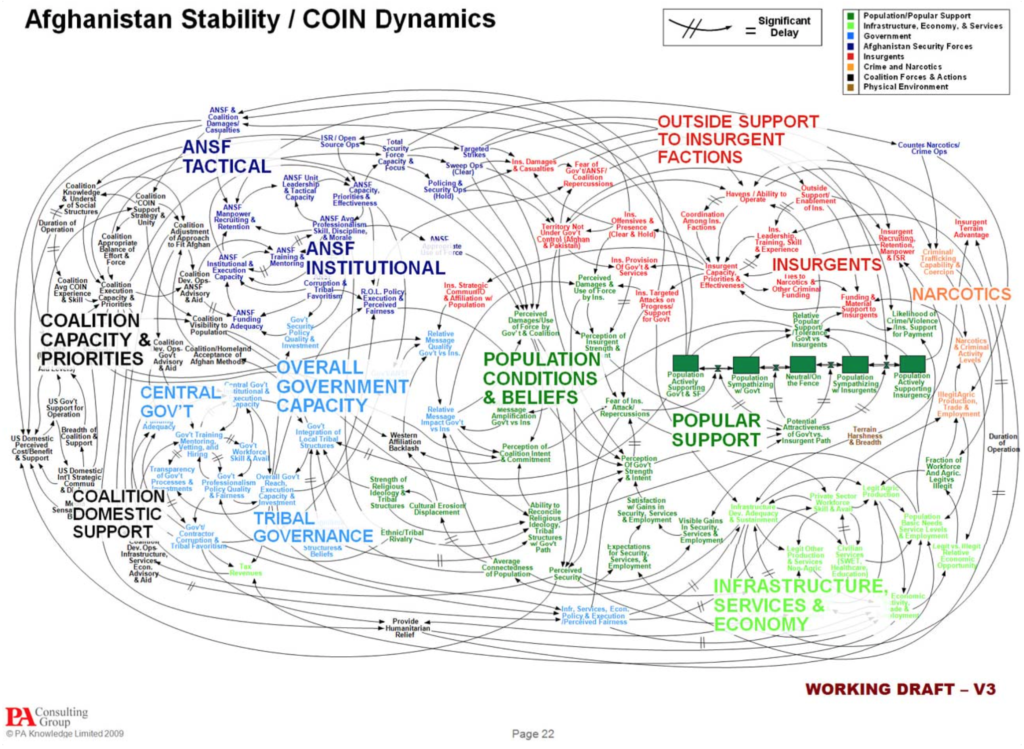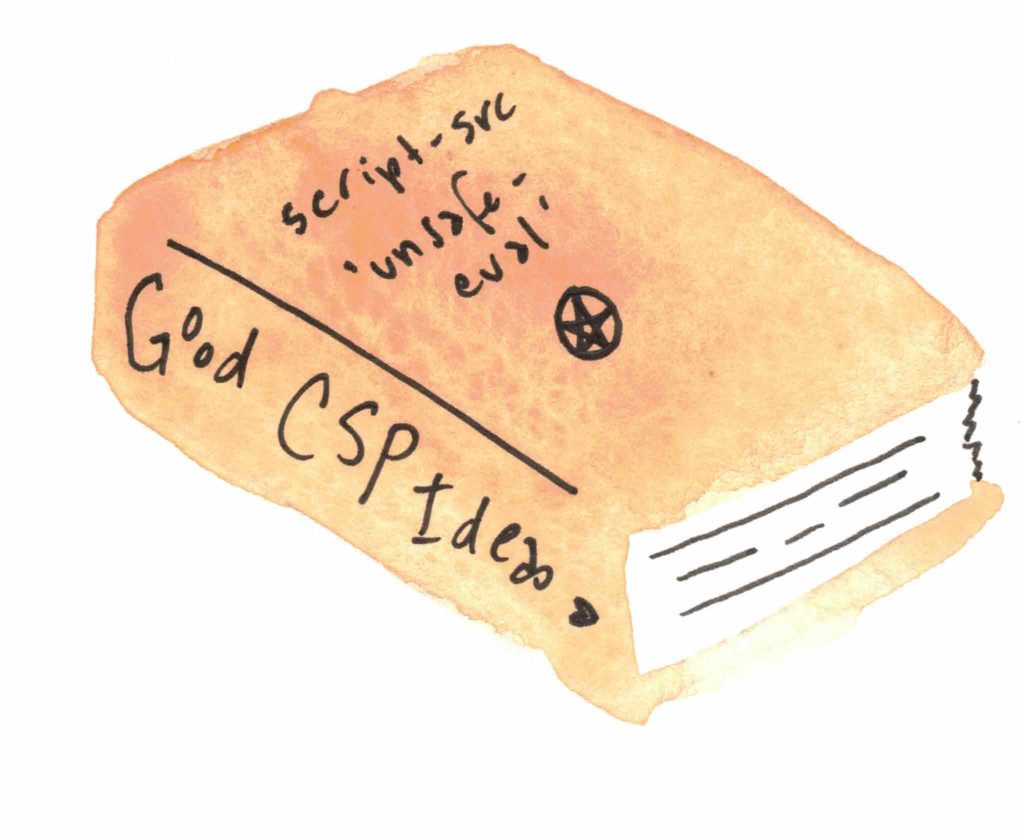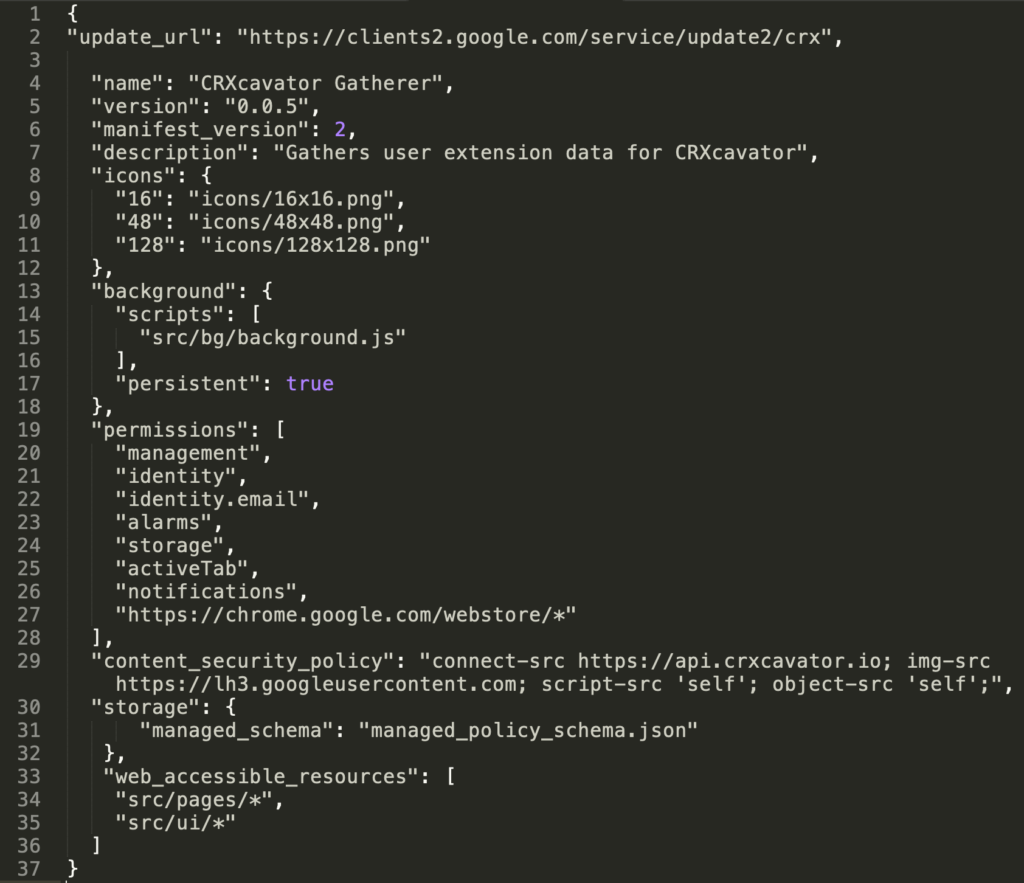This is the blog component of my PancakesCon 3 talk on 16 January 2022. Video to come.
My monthly writing newsletter lives here.
Part one: CLI Server Surveillance
This part of the talk concentrates on CLI tools that enable OSINT: Open Source INTelligence gathering. This is when you use publicly available information to learn more about a site, company, network, or other entity with the goal of getting a more complete picture than the individually released pieces of information were probably intended to create. The commands and how I’ll suggest using them are all legal to use, but I’ve noted certain applications here and there that cross that line. If in doubt, remember that typically one person using one command at a time is fine, but scripting something that hammers a target, particularly without permission, is a bad idea for lots of reasons.
I primarly work on a Mac, so the commands below are ones I’ve tested out there. Usually (but not always!) the commands and flags are the same on Linux. Try them out and learn some stuff about your system. If all else fails, add the -h flag to the command. You’ll be fine. A note on systems and assumptionsI’m Mac based, but the commands and flags are often the same on Linux… but not always. Try them out, learn some stuff about your system. If all else fails, -h! I’ve noted Windows equivalents wherever possible, but the specific flags and placement of parameters will be yours to discover.
You have to be specific to be terrific, so let’s establish what we want to learn about a website or server with these tools. We’ll be looking to answer these:
- What’s this server doing?
- What’s this server running?
- What ports are open?
- Who owns this server?
- Who is the domain registered with?
- What nameservers hold the records for this domain?
Why do we want to know these things about a server? I’ve most often done this work in the early stages of researching a target for my job – with the specific, written permission of the owners of the servers. In my last job, I sometimes did timeboxed pen testing for potential vendors, and I would start out in a big-picture way: what can I figure out about how this site runs from the outside? Without setting off alarms on the side of the folks who own the servers and without being disruptive or possibly breaking the law, what can I learn?
The tools I’m about to describe are either available on a fresh OS install or are so standard that the steps to install are well documented. I had to send a few texts to my boyfriend asking him to run commands on his normal-person Mac, as I couldn’t remember if I’d installed some of these myself or if they came standard. There’s a blog post version of this talk, and it’ll include links to installation docs if needed.
The tools
ping
ping answers questions like whether the server is up and what the server’s IP is, based on providing the domain. It uses ICMP – internet control message protocol. It’s a protocol like HTTP, HTTPS, and FTP (plus a bunch of others), although it’s part of the internet layer – those other three are application layer.
Traceroute, described below, uses ICMP too, and it’s a common protocol for diagnostic stuff. It’s an IPv4 tool, though there’s an IPv6 version too: ping6. It’s used for diagnostics because you get an echo reply if the host you’re pointing it toward is there. Implementations of ping vary a little: payload size, TTL, time to wait for a response. The echo reply is sometimes called “pong.” :)
My most common use of ping is when I realize my internet connection is being a little funky, and I want a quick sense of how broken stuff might be. Nice quick diagnostic tool when you’re trying to figure out where to start with troubleshooting. Is it zero percent packet loss or not? Beyond that, it’s oOne way to get an IP from a URL or quietly check if a server is live. It’s also possible to change the origin of the ping (though that rules out getting a response, of course).
Ping is a lovely, ordinary tool that’s been put to a couple of good, weird uses (which you should not try at home. A ping flood is an avalanche of ping requests that don’t wait for a response, with the goal of overwhelming the target and creating a denail of service. Another nefarious use of innocent old ping is the (wait for it) PING OF DEATH. Instead of a ton of individual ping requests, ONE GIANT PING would be sent, because older systems would crash (or experience buffer overflow) if you sent a packet bigger than 65,535 bytes (the size of a correctly formed IPv4 packet). This is mostly a thing in the past – firewalls and other mitigations make these generally a nonissue now. However, it was exploited in 2013 against a version of Windows! It’s patched now, but 2013!
Some sample commands
ping $url or $ip
ping -a $url or $ip (dings with each response, because you need that)
Stop after five pings: ping -c 5 $url
Intervals between: ping -i $seconds $url
It’s the same on windows: cmd > ping.
curl
curl – short for “client URL” – debuted in 1996, so it’s a more recent arrival. (Ping was born in December 1983.) It can answer questions like:
- What’s this server serving?
- What server software is it running, and what version?
- What HTTP response code does it return to various requests?
I reach for it when I either want to see something from a server but not in a browser, or I want to see information from the server that typically doesn’t show in a browser.
Some sample commands
Plain old curl $url if I’m curious what’s behind phishing URLs in texts
curl -I $url for headers (case sensitive!!!), which is the same as curl --head $url
Add -v for a little more detail about certs, TLS handshakes, IP addresses, ports, and more nuts and bolts of what’s going on
And yes, it works in Windows too: cmd > curl
When I read through the headers, I’m looking for indications of server software, and most especially for outdated versions of that server software.
nmap
nmap is short for network mapper. You might have to install this one, but the instructions are clear, or: brew install nmap. nmap can answer questions like:
- What ports are open that I could possibly connect to?
- What software is running? (With a little extra research)
nmap does lots of different kinds of scans. You can go deep on this one. It can also be very noisy if you’re trying to scan things quietly (but legally!). Hitting all the ports can draw attention you don’t want, so be strategic. It uses ping but can also use TCP, UDP, and other options as you do your recon.
nmap is one of those tools where you can use five percent of it and still do a ton. There are amazing depths to be found – it rewards putting time into it. We’re mostly focusing on port scanning here, though, since we’re looking at other people’s servers, not investigating networks we’re already in.
Some sample commands
nmap -p# $url or $ip (can be -p22 to see if SSH is available, or -p0-1023 for reserved ports, or a different selection)
nmap -F $url or $ip for faster, fewer ports than default scan
And yes, it’s available on Windows too.
Yes!
nmap has a ton of resources available, including a guide to port scanning basics and one of many, many broader guides.
netcat
netcat is another networking tool. For our purposes, it can answer questions like:
- Is this port open?
- How do I write a GET or other request?
netcat is generally good for networking things; it can be a quick way to see if a port is open. Beyond that, it’s a neat tool to put you right in the middle of how requests work when you send them to a server. Connect to a server and then send a get request for /index.html. You can get some visibility into networks with it, and also it’s just fun to mess with. What can you GET?
Some sample commands
netcat -vz $url $port to see if the port is open (just a little quicker than nmap sometimes)
-z for zero I/O (so just scanning)
-v or -vv for verbosity, of course
-T for telnet!
-t for TCP mode
netcat -vt google.com 80 (verbose; tcp) and then GET /index.html
Try ncat for Windows.
traceroute (or tracert on Windows)
traceroute can answer questions like:
- What equipment sits between me and this server?
- Who hosts this site?
- What does a request’s journey across the internet look like?
If you’re also a networking nerd, traceroute is really interesting. It’s another diagnostic program in the tradition of ping. It shows possible routes between your computer and the server you’re trying to reach, plus transit delays across a network. Ping only does round-trip times with success or failure; traceroute shows you everything in between. It’s a fun way to get to know some networking stuff, like the private IPs for your home devices, what it looks like when your request is making its way out of your ISP’s domain and when it hits the open internet, and when the request resolves.
The route is probably going to be at least a little different every time so run it multiple times to see a little more of the world. You’ll probably get some output that just has asterisks. This can mean timeouts, firewalls that prevent data being sent back to you, or equipment configured to reject ICMP packets (which are sometimes not prioritized)
Generally I’ve used this without flags and just watched the output. It was a favorite tool in the networking class I took at the Bradfield School of Computer Science. The various flags let you control TCP vs. ICMP for your requests, the number of probe packets per hop (defaulting to three), wait times, ports, TTLs, and stuff like that.
Some sample commands
traceroute $url or $ip gets you a lot of what you’ll want here. Tinker with flags if you’re curious, though; you’ll learn something cool (even if it’s “don’t do that again.”)
It defaults to IPv4, but you can specify either with the -4 or -6 flags
whois
whois can answer questions like:
- What are the (possible) nameservers for this domain?
- Who owns this block of IPs (maybe)?
- Who’s the (likely) registrar for this domain?
Note the qualifiers. I’ll explain that in a minute.
whois works with both URLs and IPs as parameters. IPs are extra fun, because you might get details about a CIDR range, which is a block of IPs designated using a 0.0.0.0/0 syntax. Check out cidr.xyz to learn more about what that means.
For URLs, you get nameserver details and other stuff IANA (the Internet Assigned Numbers Authority) stores. It can begin to tell you who owns a domain or IP, where their information is stored, where the site is hosted, where the domains are registered, and other technical details. There may be contact information in here, but most often it’s business details these days.
whois gets its information from a whois server – think a database of “we expect things to look like this,” which is (as we know) not the same as “things look like this in practice.” Sometimes it’s useful to see what things were once like or were expected to be like. In OSINT, additional information, even if it’s no longer accurate, can still provide helpful detail.
Some sample commands
whois $url
whois 8.8.8.8 (or any IP)
The whois command is the same on Windows.
dig
dig is short for domain information groper. It can answer questions like:
- What’s lurking in the DNS records for this domain?
- What do the domain’s actual nameservers have to say about all this right now?
dig provides DNS records for a domains, which can include some fun, weird stuff, especially in the TXT records. Information comes from the domain’s nameservers. Since it uses DNS information, it pulls from the same information used to resolve a domain put into a browser’s address bar. DNS is the authoritative source here. If in doubt, go with dig.
Some sample commands
dig $url
dig +trace $url to see how it does the search
dig google.com TXT (or MX or CNAME or any other type of record) to poke around some more. TXT records are my favorite because they’ve been used for so many weird things: SPF (sender policy framework) records to reduce spam and fraud via email, but also marketing software they might use and other sites that require verification that way.
If there are many IPs that resolve for a domain, it’ll show you four.
dig is available on Windows if you install BIND. You can also try nslookup.
host does something similar but only returns a little information: IP if you provide the domain, domain name pointer if you give it an IP. If you’re using it in a script and want to just use a little bit of the output, maybe processing with awk, this can be simpler and more predictable to process.
A few other useful tools for your OSINT
Wappalyzer offers Chrome and Firefox extensions that tells you the tech stack sites you visit.
Company press releases, articles about the company, and interviews with employees can give you insight too.
Look the company up on GitHub and see what’s public.
Check LinkedIn to get an idea of staffing (especially in the security teams).
Never underestimate viewing the page source (use this at your own risk if you live in Missouri, though).
And clever people have written other libraries and projects that bundle these tools, like this osint Python project.
These are fun and useful ways to learn about tools and computers, get a sense of how networks work, and learn things about a target. Individually, they’re powerful and useful. If you combine these things into scripts that give pretty output that matches your goal and how your brain works, you can do some amazing stuff.
Right! Onto part two of this talk.
Writing your first novel
Our goals here are to learn:
- How to complete a first draft without feeling terrible all the time
- What a first draft is and our working definition of a novel
A first draft is the first attempt at telling a long-form story. It is not a final draft; it’s material to be used when you revise later. Your early goals are to get from A to B, figure out some of who your characters are, get a sense of what’s important to you in this story, and give yourself something to work with in revisions. Nothing more.
Most likely, though, you’ll manage more than that as you go along. You might find that you’ve created whole people, for instance.
When I say “a novel,” I’m referring to a work of fiction that’s likely between 70k and 100k words (though epic fantasy can go longer). It can (and likely will, at some point) incorporate something from your life, if only feelings, but overall, it’s full of stuff you’ve made up.
The great thing about a first draft is that it is, by definition, not a final draft. When the first draft is done, the arrangement of all the islands in your little imagination archipelago is probably not final, but they’re there, and you’ve written the whole thing down, for your definition of “the whole thing.”
Revisions come later and are their own very large subject. Today, I’m trying to get you from “I’ve written zero novels” to “I feel like I could totally write a first-draft novel.”
Because I bet you can if you want to.
Why write a novel at all?
For some of us, it’s really fun! Maybe you have a character/scene/place in your head that you want to put into words, maybe in support of a goal. Or perhaps you have an experience you want to write about but want to fictionalize it a little or otherwise just don’t want to write a memoir.
Or maybe you’re me, and armless escapism is really useful sometimes.
What you need to get started
You need to want to do this. This sounds obvious, but a lot of writing advice can get unhelpfully abstract about this point int he process. But seriously, the single most important thing (and the same advice I give people considering getting into tech) is that you have to like this. You can figure out the rest later, but if you like the idea of having written a novel better than the reality, you’re going to have a much harder time.
You need a seed of an idea. A scene is enough. A character you want to follow around and create adventures for is enough. You just need a place to start tugging the thread and trust that the rest can follow.
How should you write, practically speaking?
Any of these work:
- Longhand, if you want
- Google Drive (my choice)
- A notes app on your phone
- Git
- Microsoft Word (seriously; it’s pretty standard among professional writing/publishing types too)
- Scrivener
Anything that fits how your brain works and lets you sit and write with minimal friction is the right tool. It should mostly invisibly support how you do things.
A little more on first drafts
I know, I know, but the thing is that a lot of lofty “how to write a novel” advice doesn’t emphasize the special and rather wonderful qualities of writing a first draft.
A first draft is:
- A way of getting from point A to point B in one of many possible ways
- A great chance to delight yourself
- A place to push boundaries of the story, because logic and characterization aren’t set yet
- Probably going to have repetition in it
- An inelegant first route that can still be super fun to write
A first draft is not:
- A chance at perfection (that comes maybe later but probably never)
- Your only chance
- Required to contain everything that needs to be there (I just changed the name of a major character almost two years after she first entered my head because I realized something didn’t work)
- Required to be written linearly – it’s totally ok to bounce around, leave placeholders, write yourself notes, etc. I sometimes put BREANNE in places so that I can cmd-F and find the things my past self wanted me to put some time into.
A first draft is woven cloth, not a finished dress. It’s clay, not a sculpture. Go wild.
Planning
Writers and their ways of planning fall across a spectrum. At one end, we have plotters; at the other, pantsers.
Plotters like to know everywhere the story is going before they start (still usually leaving room for change along the way). This is perfectly valid; lots of plotters start with an outline and then write.
Pantsers write by the seat of their pants. They know some things when they start; they know more when they’re done.
Some people (including me) are in between. I tend to write out the parts I know (this character, this scene, this setting), get about to the halfway point of a draft, and then create an outline to start better organizing the stuff I’m coming up with.
See where you feel comfortable, mostly. Play with both ends of the spectrum. Expect your process to evolve if you choose to keep up with this.
Mindfulness
Honestly, I think this is probably the most important skill for finishing the first draft of your first novel, more than beautiful sentences and perfect plot twists. You need to be able to keep putting words down with the knowledge that you’re not perfectly nailing it today. But nailing it is not today’s goal; that’s your future self’s problem when you revise. Unlike a lot of “good luck, future self” things, this is a healthy one. There is drafting you and revising you. Today, drafting you is in charge. Revising you will use different skills and priorities.
Our goal, with endless thanks to Anne Lamott, is a shitty first draft. I say this joyfully.
Here’s the great news: your first draft doesn’t have to be good, and odds are it won’t be. We’re not setting records for the marathon, we’re crossing the line in our own time, content enough not to have collapsed on the way.
While making yourself believe your story, you also need to make yourself believe that this will get better – but the thing is, it really will! You can remind yourself that I promised you the work will get better in time, and I mean it: if you choose to keep going with this, it just will.
You’ll also start to learn things about your own writing. Everyone – yes, everyone – has patterns in their writing that, left unchecked, would be undesirable in a final draft. Luckily for us, we’re only writing a first draft, and we don’t have to fix these things! You can ignore them entirely, or you can choose to passively witness them with the goal of addressing them on another day. My characters love to gaze at things pensively before finally saying something out loud. They can do this as much as they wish in a first draft.
The same is true of themes, which are the higher-level “abouts” of a story. A story might be about two people who meet at work and end up on a road trip from San Francisco to Montana, but the theme might be discovery of the true self, the compromises we make in love, or the American dream. Themes are a concern of the revising you in the future. You have the option of totally ignoring it in a first draft. If you want, you can watch and get a sense of what some likely themes are… and then put them away until the time is right.
Remind yourself: perfection is not required this day. Only word count and progress.
How to keep going on this long solo journey
Have a place and a time to do this thing. Yes, routine again. But it helps to not have to do the work of where and when anew every time.
Bribe yourself. Maybe you go on a walk afterward or text a friend. I don’t love using food for stuff like this, because we don’t need to earn food. But put an incentive on the other side, and routine will come together aster.
Practice acountability, even if it’s just posting about what you’re doing on Twitter. More on this in a minute.
Practice being very nice to yourself. When I write a note about a to-do, I often write “please.” Writing can be punishing. Be soft where you can.
Celebrate victories. Victories can take lots of forms. Embrace most of them, even and especially the small ones.
How to know you’re doing actual work
The simplest way to do this is to track your word or page count. This can be very official (I have a spreadsheet) or just by taking a look at things (shortcut in Google Docs: cmd-shift-c). However, this can also be emotionally unhelpful for some of us, so don’t feel like this is how you need to do this. If you suspect this kind of rigorous measurement will psych you out, skip it!
Instead, consider tracking your butt-in-seat-hands-on-keyboard time. And this doesn’t have to mean writing down your minutes. It can just mean that you always sit down to write for a half hour after work. You may write, you may not, but you created the conditions where writing can take place. That can be victory too.
Related: consider finding a routine. Feel happy when you stick to it. I like London Writers’ Hour, Australia edition, which is roughly at lunch in my time zone. On those days, I get to know exactly when I’ll write with no thinking or life rearranging. Awesome.
Set goals for yourself if you want, but keep them gentle at first. Ambition can come later. People don’t start out wanting to climb a mountain; first, they usually climb an indoor wall of low difficulty, and then they work their way up. Writing’s the same.
Accountability
If you want to do this, figure out if you do best with accountability to yourself or someone else.
I do a mix of bullet journaling and spreadsheets to keep on top of my life and progress on most things in it. It means a lot to me to check certain boxes everyday, and I really dislike missing one. So internal accountability works well for me.
But you may do better with external accountability. In that case, you can try posting on social media when you’ve done your work for the day, texting a friend, or reaching out to writing community. Speaking of…
Community and why it’s useful
Writing’s a lonely journey. It’s nice to have parts of it be less so.
I’ve found community largely through Slacks: Clarion West’s during their summer writing event, dedicated channels in various tech Slacks I’m in. But I’ve also done things on Twitter, and there are sub-Reddits that are super active: r/writing, r/KeepWriting, r/writers, and others dedicated to specific genres are great places to start. When in-person events are going on, local readings, writing classes, and conferences are really useful for this. And writing classes still exist these days – there are tons being held over Zoom, so you can commune remotely and still meet people. Classes held across multiple days are great for this.
Beyond that, keep going, and you’ll get to a point where you need beta readers, which are the first people who read something you’re working on once it gets to a place where it’s ready for someone else. (For a lot of people this is the second, third, or fourth draft.) It’s a great idea to make friends with people who are in a similar place with their work to you; you can learn together, and quite possibly (if you have ambitions with your work) help each other succeed.
And then: just one damned thing after another
It’s useful to have an idea of where to start and where you’re going (or I feel reassured by that, anyway). But you don’t have to. Write the thing you’re excited by first. Then figure out the next thing you’re excited by and keep going. This gives you momentum, but it’s also good data. If you’re excited to write it, probably someone will be excited to read it. Conversely, if you find yourself putting off writing something over and over again or it feels like a drag, that may well shine through to the reader too. Write the boring stuff too, but note where the electricity is.
Troubleshooting
All writers are different, but many of us experience the same problems.
“I keep rereading what I’ve written and trying to optimize it.”
Write yourself a note about what you want to accomplish the next time you sit down. Then, if you must, only reread the last couple of paragraphs before you start typing. Minimize the reorientation you have to do, and you’ll be less likely to get lost in the work.
“I hate what I’ve written lately.”
Totally ok. We all do sometimes. The more you do this, the more you’ll cringe when rereading old stuff – you’re growing, so this is actually a great sign. It’s great to have more than one thing to write going at any given time, so your ENTIRE WRITING SUCCESS doesn’t depend on solving the one and only problem before you right now. Alternatively: walk away for a while. It’s totally normal and good to put things down and not pick them back up for a bit. A lot of times, answers creep in at the quiet moments. My brain likes to give me surprise answers when I take walks and when I’m falling asleep.
“I don’t know what happens at the end.”
Very normal. Meander with your characters more. Dive into the middle. Explore your world, figure out colors and textures and smells. The end, like all the rest, is a work in progress. Things can change wildly between drafts, and that’s totally valid. I also like writing monologues from characters if I feel like I don’t understand their motivations or goals. Usually they’ll reveal something to me if I just give them space to talk.
“I don’t like this novel business after all.”
Congratulations, my friend. You get to choose another hobby if this really just feels bad for you. And cheers to you for trying something new!
Takeaways
Thanks for staying with me through two very different subjects! Here’s what I hope you carry away with you.
The command line can do so much powerful, cool stuff, and you can do awesome things with the information it can give you.
If you want to write a first draft novel, you absolutely can.
As with so many things: butt in seat, hands on keyboard. You can do it.
Thank you <3


























